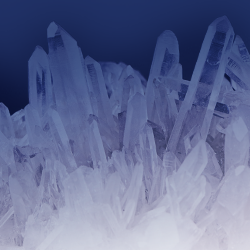Nucleation: Current Understanding Approaching 150 Years After Gibbs
 Nucleation is a ubiquitous phenomenon in technology and the natural world. It plays key roles in geology, across chemistry, physics, and biology and on to industrial processes like the setting of concrete, cryopreservation and the manufacture of drugs. Identification of the mechanisms by which crystal nucleation occurs therefore promises a new physical understanding of this fundamental process and the ability to control crystallization in multiple environments. This Special Issue will focus on advances and challenges in developing a fundamental, microscopically-based understanding of crystal nucleation mechanisms. Despite having been studied for over a century, it is only recently that developments in experimental, theoretical and computational techniques have given the opportunity to characterize the molecular-scale processes that underlie crystal nucleation.
Nucleation is a ubiquitous phenomenon in technology and the natural world. It plays key roles in geology, across chemistry, physics, and biology and on to industrial processes like the setting of concrete, cryopreservation and the manufacture of drugs. Identification of the mechanisms by which crystal nucleation occurs therefore promises a new physical understanding of this fundamental process and the ability to control crystallization in multiple environments. This Special Issue will focus on advances and challenges in developing a fundamental, microscopically-based understanding of crystal nucleation mechanisms. Despite having been studied for over a century, it is only recently that developments in experimental, theoretical and computational techniques have given the opportunity to characterize the molecular-scale processes that underlie crystal nucleation.
Topics covered include, but are not limited to:
- Experiment
- Simulation
- Molecular crystals
- Inorganic materials
- Crystallization
- Enhanced sampling
- Machine learning
Guest Editors
Pablo Debenedetti, Princeton University
Hajime Tanaka, University of Tokyo
Fiona Meldrum, University of Leeds
Yi-Yeoun Kim, University of Leeds
JCP Editors
Angelos Michaelides, University of Cambridge
Francesco Sciortino, Sapienza University of Rome
Carlos Vega, University Complutense of Madrid
More information:
Please note that papers will be published as normal when they are ready in a regular issue of the journal and will populate on a virtual collection page within a few days of publication. Inclusion in the collection will not cause delay in publication.
How to Submit:
- Please submit through the online submission system.
- Under manuscript type → select Article or Communication, as appropriate
- Under manuscript information → Manuscript classification → select Special Topic: “Nucleation: Current Understanding Approaching 150 Years After Gibbs”
